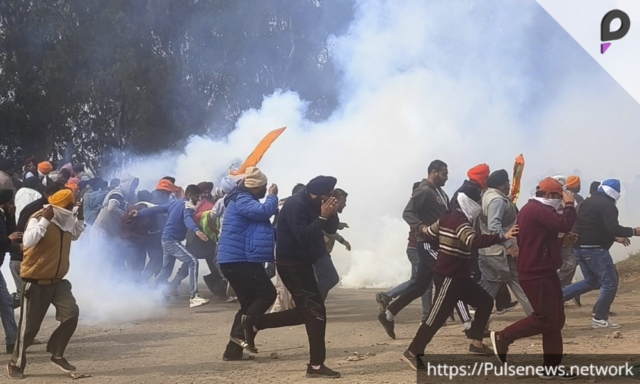New Delhi: In anticipation of the protest, Indian Police Use Tear Gas to Far Disperse Farmers’ march. Heavy obstacles made of concrete blocks and lines of razor wire were set up at Shambhu. Approximately 200 kilometers north of New Delhi. Authorities also suspended mobile internet services along the route. Aiming to disrupt communication among the protesters and prevent them from coordinating their actions.
Despite these efforts, the farmers managed to break through part of the blockade. However, their advance was met with a strong police response. Which included the use of tear gas to disperse the crowds. This show of force highlighted the tense standoff between the farmers and the government, as well as the lengths authorities would go to maintain order.
Farmers’ Demands
Farmer leader Sarwan Singh Pandher addressed reporters, expressing the frustration of the protesters. He noted that although the farmers had engaged in four rounds of discussions with the government in February, no further talks had occurred since then regarding their demands. “We want the government to let us exercise our democratic right to protest,” Pandher stated, underscoring the significance of their cause.
In addition to their primary demand for guaranteed minimum prices, the farmers are also seeking a range of other concessions. These include loan waivers and increased compensation for land that the government acquired several years ago. The demands reflect the broader challenges faced by farmers in India, who are often vulnerable to economic pressures and the impacts of fluctuating market prices.
The Political Context
The renewed protests come at a time when the Indian national parliament is in session, highlighting the political implications of the farmers’ demands. With two-thirds of India’s 1.4 billion people dependent on agriculture for their livelihoods, the farmers wield considerable political influence. Agriculture accounts for nearly a fifth of the country’s GDP, making it a critical sector in the Indian economy.
The backdrop of the current protests harkens back to the significant farmer protests that began in November 2020 against agricultural reform bills. Those protests lasted for over a year and posed a major challenge to Prime Minister Narendra Modi’s government, which sought to implement reforms in the agricultural sector. Ultimately, the sustained pressure from farmers led to the repeal of three contentious laws that many believed would enable private companies to dominate the agricultural landscape in India.
Background of the Protests
On Friday, Indian police used tear gas to break up farmers trying to march to New Delhi, the capital. The farmers aimed to reaffirm their long-standing requests for guaranteed minimum prices for their crops with their “March to Delhi” campaign. This renewed effort seeks to channel the momentum of their dramatic protests in 2021, when they made headlines by storming the capital on tractors in a bid to assert their rights and demands.
Conclusion
The ongoing protests by Indian farmers reflect deep-rooted issues within the agricultural sector and highlight the ongoing struggle for rights and recognition. As farmers continue to assert their demands for fair treatment and economic stability, the government’s response will play a crucial role in determining the future of agricultural policy in India. The situation remains dynamic, and the farmers’ determination to make their voices heard signifies the ongoing challenges faced by those who rely on agriculture for their livelihoods.











